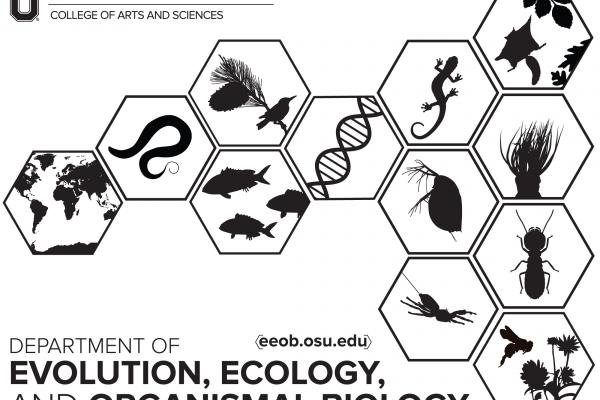Publications by EEOB Faculty July 1 - July 31

Genetic diversity and population structure in Cary’s Beardtongue Penstemon caryi (Plantaginaceae), a rare plant endemic to the eastern Rocky Mountains of Wyoming and Montana
Abstract
Genomic signatures of sympatric speciation with historical and contemporary gene flow in a tropical anthozoan (Hexacorallia: Actiniaria)
Abstract
Contributions of autochthonous, allochthonous, and aged carbon and organic matter to macroinvertebrate nutrition in the Susquehanna River basin
Amber R. Bellamy, James E. Bauer, and Andrea G. Grottoli. 2019. Freshwater Science
Volume 38, Number 3
Abstract
Previous research suggests that rivers transport large amounts of aged allochthonous material, but it is unclear how much of this material contributes nutritionally to macroinvertebrate biomass. Furthermore, little research has investigated allochthonous vs autochthonous nutritional resource use by macroinvertebrates in the tributaries and low-order streams of major river systems. The primary goal of this study was to quantify both the sources and ages of organic matter (OM) that contributes to the nutrition of stream macroinvertebrates in different functional feeding groups (FFGs). We used natural abundance stable (δ13C, δ15N, and δ2H) and radiogenic (Δ14C) isotopes to assess resource use in a network of 7 subwatershed streams in the Susquehanna River basin. Isotope mixing models revealed that autochthonous OM contributed as much as 80% of macroinvertebrate biomass for scraper, filtering collector, and collector–gatherer FFGs, whereas allochthonous sources contributed much less (6–44%) to macroinvertebrate biomass of these FFGs. However, allochthonous OM contributed up to 73% of shredder FFG biomass. Contributions of aged (ranging from 75–11,700 y B.P.) OM to macroinvertebrate biomass varied by macroinvertebrate group. Chironomids assimilated the most aged OM (43%) of any macroinvertebrate group, most of which was from soil and sediment sources. We also found that macroinvertebrates in a stream with active methane seepage had the oldest C in their tissues of the streams in this study (5600–4200 y B.P.), which was probably a result of the macroinvertebrates consuming C derived from this methane seep. Our findings show that the sources and ages of OM assimilated by macroinvertebrates largely varied as a function of FFG and that these differences probably resulted from FFG habitats and diet preferences, as well as the presence or absence of ancient forms of C in streams.
Divergence of tropical pitvipers promoted by independent colonization events of dry montane Andean habitats
David Salazar‐Valenzuela, Ulrich Kuch, Omar Torres‐Carvajal, Jorge H. Valencia, H. Lisle Gibbs. 2019. Journal of Biogeography. https://doi.org/10.1111/jbi.13661
Abstract
A poorly explored feature of the origin and maintenance of Neotropical biodiversity is how the evolutionary dynamics of colonization and differentiation in relation to lowland and highland habitats has impacted lineage formation. Most speciation models for this region have focused on vicariant events, whereas the need to assess the influence of demographic processes has been recognized only recently. We evaluate if the origin of Andean montane lineages of terciopelo pitvipers is explained by either of two historical processes that represent distinct phylogeographic mechanisms: differentiation by isolation within the highlands or different dispersal events from the lowlands. We use genomic data and genetic clustering analyses, evaluation of historical migration between genetic clusters and demographic model selection to investigate recent diversification events in South America using a vertebrate group rarely explored in phylogeographic studies: tropical Andean snakes. Specifically, the origin of two Ecuadorian montane lineages of terciopelo pitvipers was evaluated given ambiguous phylogenetic relationships with the presumably ancestral Pacific lowland lineage.
